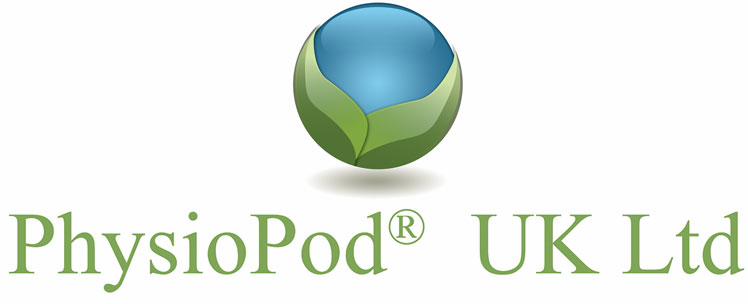Visible Effect of Deep Oscillations in the Lung Field Followed by Ultrasound
Images in rehabilitation. Cuban Journal of Physical Medicine and Rehabilitation. 2023;15(2):e821

Yuneisys Coronados Valladares1* https://orcid.org/0000-0001-7818-272X Daylén García Jorge2 https://orcid.org/0000-0001-9561-1055 1 "Julio Diaz" Rehabilitation Hospital, National Reference Centre. La Havana, Cuba. 2 "Comandante Manuel Fajardo" Clinical Surgical Hospital. Havana, Cuba. *Author for correspondence: yuneisyscv86@gmail.com
ABSTRACT
Lung injury induced by SARS-CoV-2 can cause lung epithelial and endothelial damage. Deep oscillations constitute a therapeutic alternative, which transmits an intermittent, pulsating electrostatic field through oscillations. It works in a frequency range allowing circulatory drainage, muscle relaxant, analgesic and anti-inflammatory effect. It provides a pleasant relaxation and mobilization in diseases of the respiratory tract. The objective of this presentation is to show images that evidence the effect of deep oscillations in the respiratory area. Deep oscillation therapy can be said to reach depth levels with influence on chest tissue, parietal pleura, lung pleura and lung parenchyma.
Keywords: deep oscillations; lung field; SARS-CoV-2; ultrasound.
Received: 01/10/2023 Accepted: 09/02/2023
Deep Oscillation® is a unique treatment method in which an alternating electrostatic field is generated between the patient's tissue and an applicator or the therapist's gloved hands. As the electrostatic forces move over the skin, they alternately attract and release the tissue, generating a gentle resonance vibration that penetrates all layers of the tissue, up to 8 cm deep. By selecting the right parameters, the deep oscillation is able to vibrate the entire thoracic space.(1,2,3)
Deep oscillation has shown excellent results in patients with different obstructive lung diseases (COPD, asthma, cystic fibrosis, etc.), with mucolytic effect; stimulation of expectoration; increased interstitial drainage and pulmonary lymphatic activity; relaxation of the respiratory musculature; improvement of ventilation and adhesiolysis (release of lung/pleural adhesions)(4).
Taking into account the findings of Professor Medina(5) in his video conference on the effects of Deep Oscillation in the respiratory area, it was decided to apply this methodology to contribute to the level of evidence and show the behaviour of deep oscillations at the pulmonary level and thoracic tissues, followed by ultrasound, in a patient with post-COVID- pneumonia 19, where deep oscillation therapy was applied as part of his treatment protocol (fig. 1).
.png)
The technique was used with special gloves; massaging with both hands. The applications were carried out with an intensity of 50% and a low frequency of 20 Hz, and duration of the individual pulses and the pause between pulses: 1/1 (mode 3).
The electrostatic field was applied over the rib cage (fig. 2) and the lung field (fig. 3) to demonstrate the influence of deep oscillation on the ultrasound.
At the level of the ribcage, oscillations reaching the lung parenchyma (up to 8 cm deep) could be observed. In addition, reversible plastic deformities of the connective tissue were observed when the oscillation was applied. As the deep oscillations were passed, it could be seen how they reached different depths depending on the speed of application.


Conclusions
The electrostatic field generated by deep oscillation therapy at the level of the rib cage and lung fields reaches depth levels with influence on the thoracic tissue, parietal pleura, lung pleura and lung parenchyma, which justifies the mucolytic effect, the stimulation of the expectoration, increased interstitial drainage and pulmonary lymphatic activity, and relaxation of the respiratory musculature.
The scientific community is encouraged to conduct experimental research on the benefits of deep oscillations in respiratory diseases, including post-COVID-19 sequelae.
Acknowledgement
To the intensive care team of the International Clinic "Camilo Cienfuegos", for contributing to the realisation of this material.
Bibliographical references
Physiomed. Deep oscillations. A unique, non-invasive, atraumatic treatment method with great potential for analgesic action. Available here.
Physiomed. Instructions for use DEEP OSCILLATION® Evident; 2020
Coronados Valladares Y, Alba Gelabert CJ, Lorenzo García E, Viltres Martínez VM, Govante Bacallao Y. Deep oscillation therapy as an adjunct to kinesiotherapy in the treatment of gonarthrosis. Rev. Cub. Med. Phys. Reh. 2017 [accessed 01/10/2022];9(2). Available at: https://revrehabilitacion.sld.cu/index.php/reh/article/view/228/322
Deep oscillation in patients with COVID-19. ARRAYA Medical Equipment. 2020 [accessed 01/10/2022]. Available at: https://www.arrayamed.com/novedades/62-oscilacin-profunda-en-pacientes-con-covid-19.html
Medina Cabezas LF. Effects of Deep Oscillation in the respiratory area. 2020 [accessed 01/10/2022]. Available at: https://www.youtube.com/watch?v=u_KLj0KUp70
Conflict of interest
The authors declare that there is no conflict of interest.
Cuban Journal of Physical Medicine and Rehabilitation. 2023;15(2):e821
This work is licensed under a licence: https://creativecomons.org/licenses/by-nc/4.0/deed.es_ES

